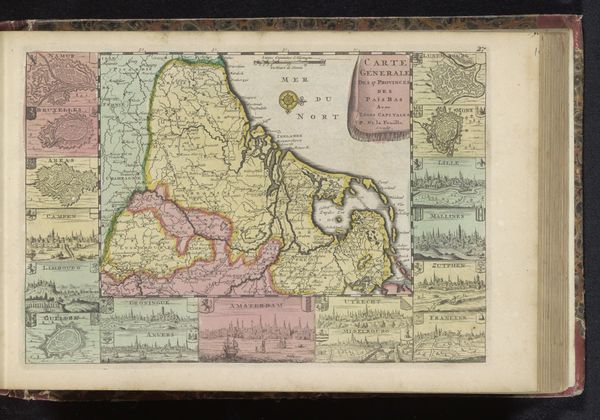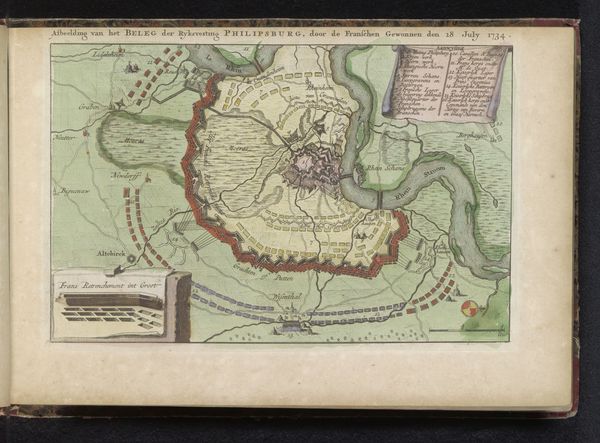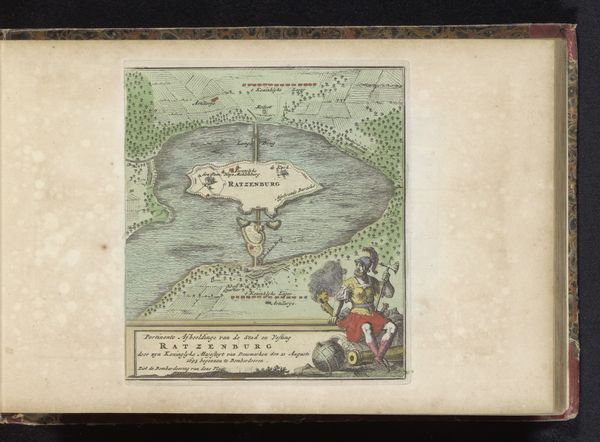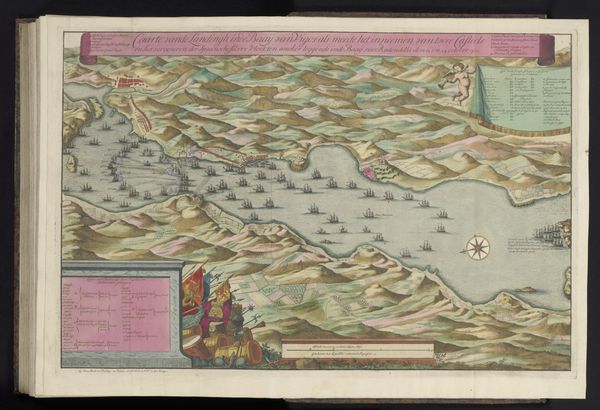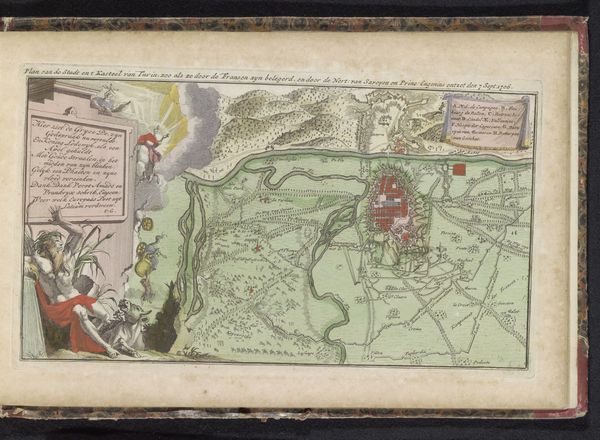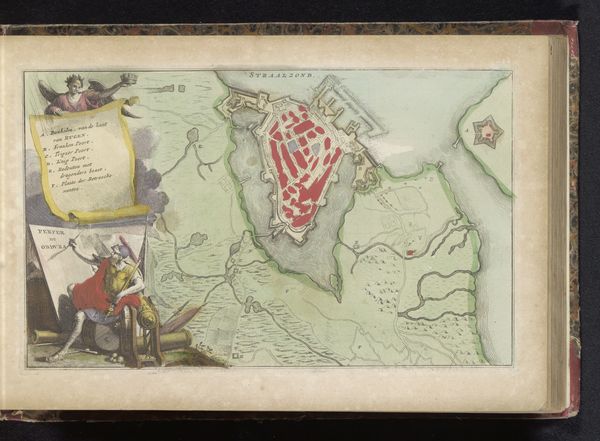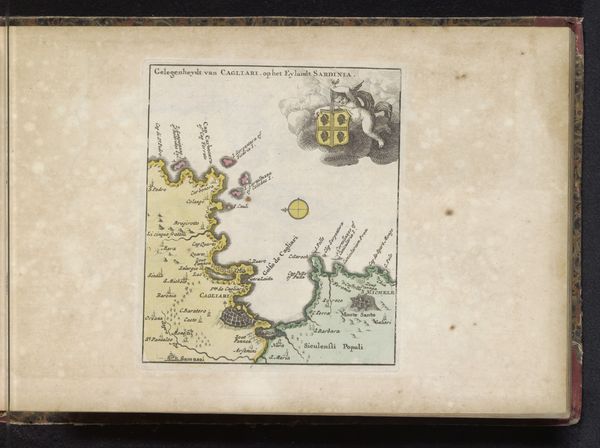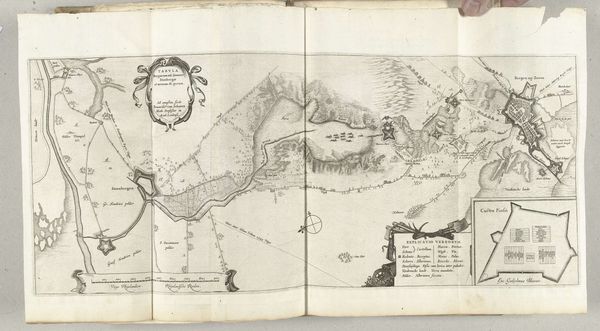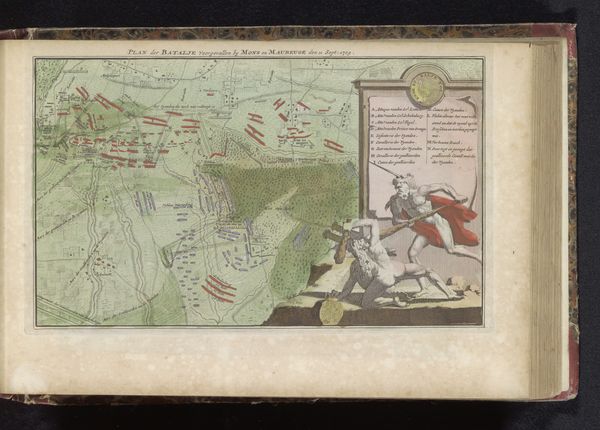
drawing, coloured-pencil, print, paper, watercolor
#
drawing
#
coloured-pencil
#
water colours
#
baroque
# print
#
landscape
#
paper
#
watercolor
#
coloured pencil
#
history-painting
Dimensions: height 152 mm, width 270 mm
Copyright: Rijks Museum: Open Domain
Editor: So, here we have "Doorbreken van de Franse linies in Brabant, 1705," or "Breaking of the French Lines in Brabant, 1705," made around 1735 by Zacharias Chatelain II. It's a colored pencil drawing, seemingly depicting a battle scene, almost like a map. The red and blue lines suggest opposing forces, and I'm curious – what does this work tell us beyond just a historical event? Curator: It's more than just a map, it's a representation of power, control and conflict viewed through the lens of the Dutch Golden Age's decline and the shifting power dynamics in Europe. What’s visually striking is the seeming dispassion in the rendering – but think about how that 'objective' rendering actually serves to sanitize the brutal realities of war, turning human struggle into an easily digestible strategic overview. Editor: So the artist isn’t really showing us the human cost, but a more abstract representation? Curator: Exactly! It highlights a very particular worldview. Who had access to this map? Who was it meant to serve? These prints were often commissioned by the military or political elite, those directly benefiting from colonial expansion and warfare. By presenting war as a series of strategic lines, they're distancing themselves from the human suffering inflicted upon colonized people. The “landscape” is also highly constructed; how do those visual structures uphold or challenge power relations, specifically, what voices are erased or given prominence in such depictions of military activity? Editor: That's fascinating. I hadn't considered the power dynamics inherent in even seemingly neutral depictions of war. Curator: These historical depictions teach us to dissect the visual rhetoric of conflict and consider whose perspective is being privileged and normalized. What narratives are subtly being promoted about those involved, and especially those affected, in conflicts? How can we view historical events, understanding them in a way that seeks social justice? Editor: I’m definitely seeing this work with new eyes. Thank you, it's given me a lot to think about, particularly with considering whose narratives we are engaging with when learning about art, but also when looking at contemporary media coverage about conflict.
Comments
No comments
Be the first to comment and join the conversation on the ultimate creative platform.

